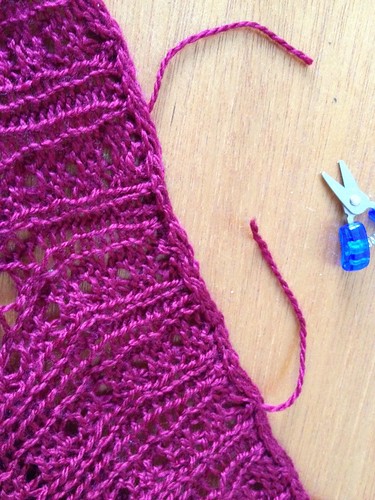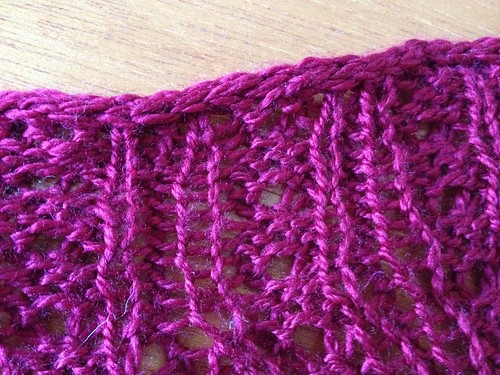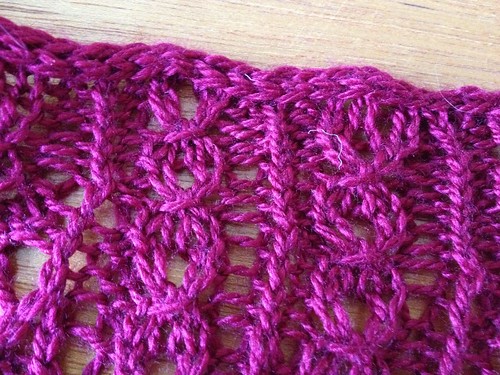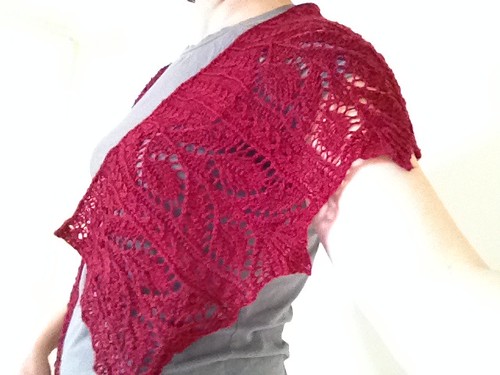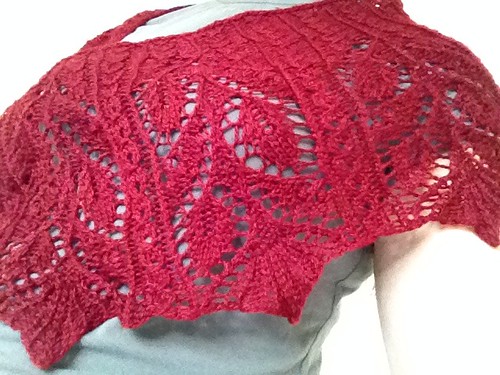Sometimes you just have to chain ply
I'm a big proponent of not having hard and fast rules when it comes to spinning, particularly when talking about color. There's no spinning police that decree how you must spin your variegated top or your naturally colored batt - part of the joy and the fun of spinning colored fiber is seeing how those colors blend and play together in the finished yarn. Sometimes you might have a particular goal in mind, other times not. That's just part of the adventure.
When I sat down to spin up some Quantum Dots samples for this month's Phat Fiber box, I did what I usually do - a 2 ply and a 3-ply. Given that this is a gradient colorway, chain plying seemed like the way to go for the 3-ply, but I was interested in seeing how the 2-ply would come out. My expectation was that it would still be pretty good, if not as clearly colored as the chain ply. Boy was I wrong...
Quantum Dots 2-ply (ugh) and chain ply (hooray!)
So...let's start with the successful part of the experiment: the chain plied sample is, not unexpectedly, a good way to spin this wildly variegated gradient fiber. The rainbow spectrum shines through with the long color repeats being maintained from single to plied yarn. Another option for obtaining this effect would be to split the top lengthwise down the middle and to spin two singles to ply together, matching the colors as you go. You might get a bit of overlap or mixing of the colors at the transition points, but the general color progression would be maintained pretty effectively.
Ick
Now for the unsuccessful part of the sampling process: hello 2-ply mud! I took one length of the repeat and split it in half across the midpoint, so I ended up with one piece of top running from red to yellow-green, and the other running from green to dark blue. I spun the singles from the same ends, ie red to yellow and green to blue, and then plied them the same direction. The result is a fantastic example of what happens when you mix colors that are opposite to each other on the color wheel - you get muddy, boring, bleh yarn.
If I'd done this experiment with a more tonal gradient, the 2-ply probably would have worked much better. But given the highly contrasting hues and values in this top, a straight 2-ply without manipulating the colors appropriately is not the way to go.
So the take-home message? it's a good idea to think about how your colors are going to blend together in your final yarn if you're trying to do a 2-ply. Another important note: the more plies you have in your final yarn, the more blending you'll see of the colors. So if you're looking to get a uniform yarn (no matter what kind of top you start with), do more plies. If you want to kepe the colors more separate and distinct, fewer plies is the way to go.
Happy spinning!
Rachel





















